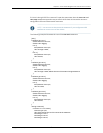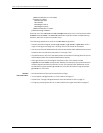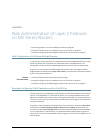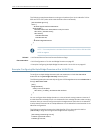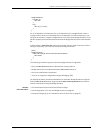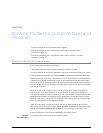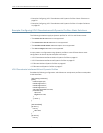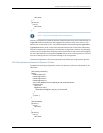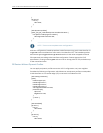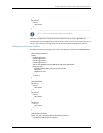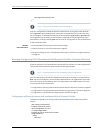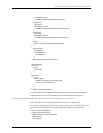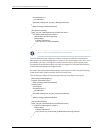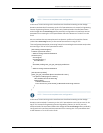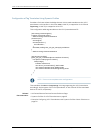
vlan-id 20;
}
}
ge-0/0/3 {
unit 0 {
vlan-id 30;
}
}
NOTE: This is not a complete router configuration.
With this configuration, broadcast packets inside frames arriving with VLAN identifier 10
on ge-0/0/1 are normalized to a dual-tagged frame with an outer VLAN value of 200
and an inner VLAN value of 100. The broadcast packet and frames egressing ge-0/0/2
or ge-0/0/3 have the outer VLAN value stripped and the inner VLAN value swapped to
20 and 30 respectively, according to the interface configuration. However, this stripping
of theouter VLANtag andthe swappingis extra work, because the frames will stillegress
the VPLS pseudowire in routing instance green with an outer VLAN tag value of 200 and
an inner VLAN tag value of 100, also according to the configuration.
The same configuration can be accomplished more effectively using dynamic profiles.
VPLS Pseudowire Interfaces and Dynamic Profiles
Consider the following configuration, which uses dynamic profiles to manipulate VLAN
identifiers:
[edit routing-instances]
green {
instance-type vpls;
interface ge-0/0/1.1;
interface ge-0/0/2.1;
interface ge-0/0/3.1;
vlan-id 100; # Desired inner VLAN tag on the VPLS pseudowire
protocols vpls {
vpls-id 10;
neighbor 10.1.1.20 {
associate-profile green_vpls_pw_1; # The profile
}
}
{...more...}
}
[edit interfaces]
ge-0/0/1 {
unit 0 {
vlan-id 10;
}
}
ge-0/0/2 {
unit 0 {
vlan-id 20;
}
65Copyright © 2010, Juniper Networks, Inc.
Chapter 6: Dynamic Profiles for VLAN Interfaces and Protocols



